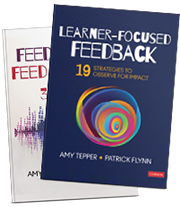Guest Author: Mike Maunsell
Mike Maunsell is in the last phase of his teacher preparation program at the University of Bridgeport in Bridgeport, CT. He is entering the teaching profession as a second career.
Not long ago I was speaking with my friend Patrick Flynn, Executive Director of ReVision Learning, about teaching and learning in classrooms. At the time, I was a second semester student in the Masters program at the University of Bridgeport and preparing for the time when I would be working with a classroom of my own. Patrick directed me to a Ted Talk entitled, “Build a School in the Cloud” by Sugata Mitra. The talk blew me away. Sugata spent years traveling to the poorest parts on earth and merely “dropping” a computer for local kids to learn and teach themselves. The results were astounding! Children from the poorest places on Earth began to teach themselves everything from different languages to high level physics on their own with a simple laptop and internet access. Months passed and I now am student teaching in a 5th grade class at Oxford Center School, Oxford, CT. Needless to say the last few months have been cold so we have had months of indoor recess. I recalled this talk and began to ask myself how I could incorporate what I had learned to the classroom. As an experiment, I began by leaving safe Science equipment on the back table for them to play with. We were covering Color and Light so I had prisms, colored filters, flashlights, etc… I didn’t acknowledge they were there and didn’t make a big deal of it. The children would come in from lunch and slowly gravitate towards the materials. What began to happen was amazing! They began to teach each other science. They would conduct their own experiments. Students that I previously noticed were struggling with science concepts, were learning from their peers in a way they seemingly could not learn during a more traditional lesson. Just because they could, they would play “Science” for recess. The end result was that all of the students became completely engaged in Science.
As I went back into my science lessons during instructional time, I found myself teaching with a fully engaged class. They all became “experts” in color and light and I began to hear daily accounts from students of observations they made at home after school, in addition to a few students who told me they had been conducting research at home when it wasn’t called for. They could not get enough of it.
I am starting a lesson on fractions next week and for the past few weeks I have been leaving the fraction manipulatives out along with the science equipment. I am already noticing the same patterns. I simply left the materials there without saying anything and they began to ask questions of me like “what are these and how do we use them”. I would sit and do a quick demonstration and then leave. They began to ask me to give them examples to work on during recess. As was suggested by Sugata Mitra in his Ted Talk, it is amazing what students will learn and do when they feel that they have discovered it on their own, feel that no one has told them they have to learn it, and there isn’t a test involved.
As I begin my career as a teacher, having witnessed directly the power of curiosity to incite learning for students, I feel even more excited about teaching than ever before. I realize now the importance of giving students space and time to learn and explore on their own, and to question and problem solve without fear of having to regurgitate it on a test. In our crazy, fast-paced culture we have forgotten what it is like to sit, explore, and think deeply, and this type of learning and reflection must take place in order for true learning and problem solving to take place.



Leave a Reply